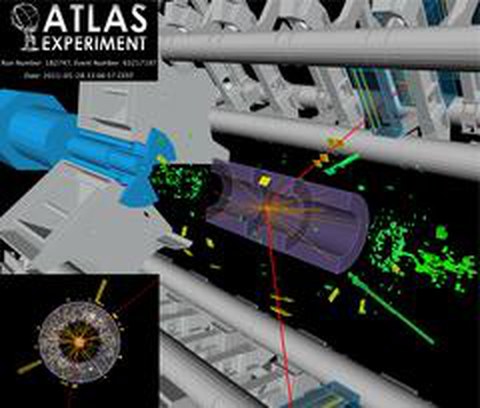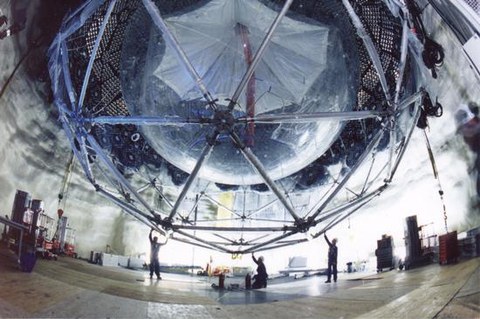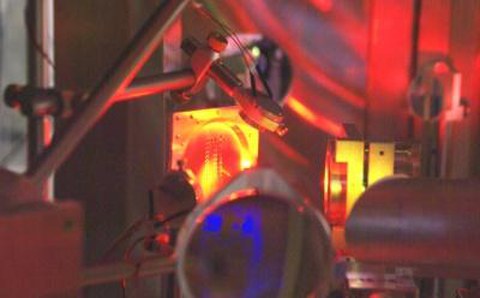Particle, nuclear and astrophysics
The fields of particle, nuclear and astrophysics deal with the largest and smallest structures in the universe. Dresden physicists in these areas investigate physical laws governing the fundamental elementary particles, the fundamental forces acting between them as well as the behavior and compositions of stars, black holes and the universe as a whole.
In the particle physics groups, scientists are concerned with understanding nature at the subatomic level through theory and experiment. The Standard Model describes the current state of particle physics knowledge. Dresden particle physicists investigate quantum field theoretical foundations of the Standard Model and its possible extensions and open questions. One such quandary is the origin of the mass of elementary particles.
Furthermore, the researchers deal with the theoretical foundations of physics beyond the Standard Model, such as a new symmetry - the so-called supersymmetry - between particles and forces.
In experiments at the Large Hadron Collider (LHC) at CERN in Geneva, the fundamental components of matter are generated and their properties are studied. A Higgs particle has been discovered in 2012, whose properties have to be measured exactly. Moreover, one hopes, for example, to possibly find new Higgs states or particles predicted by supersymmetry.
The physicists participate in the SNO+, COBRA and GERDA experiments and investigate the properties of neutrinos. One goal is to examine whether neutrinos are their own anti-particles. A further research area is precision lepton physics, including muon g-2 and lepton flavor violating processes, which have the potential to shed light on fundamental symmetries and extensions of the Standard Model.
The field of nuclear physics in Dresden spans a wide range of topics such as ultra-low-background experiments used for neutrino and muon physics up to precision measurements of nuclear reactions relevant for astrophysics. The groups operate the Felsenkeller lab, a unique underground accelerator facility in the vicinity of Dresden.
Outreach is another important strength, which is strongly connected to research. Here the focus is to communicate research outcomes and methods to diverse audiences such as high-school students and teachers.
The astrophysics group is also affiliated with the German Center for Astrophysics and focuses particularly on X-ray astronomy, black holes, and the development of gravitational wave detectors.

Radio telescope MeerKAT
Other research topics encompass the applications of ionised radiation in medicine and technology, e.g. the measurement of radiation doses (dosimetry) or radiation transport calculations. The focuses of the cooperative effort with the Helmholtz-Zentrum Dresden-Rossendorf are astrophysical nuclear processes, nuclear safety research, and laser particle acceleration.
The following professorships and research groups work in this field:
At the Institute for Nuclear and Particle Physics:
- G. Hasinger, Astrophysik
- M. Kobel, Particle Physics
- F. Siegert, Particle Physics and its Simulation
- D. Stöckinger, Phenomenology of Elementary Particles
- A. Straessner, Experimental Particle Physics
- K. Zuber, Nuclear Physics
- T. Kormoll, Radiation Physics
- D. Bemmerer, Nuclear Astrophysics (HZDR)
- S. M. Schmidt, Quantum statistics of strongly correlated systems (HZDR)
- U. Schramm, Laser-Plasma Physics (HZDR)
- C. Stegmann, Astroparticle Physics
- A. Wallner, Accelerator Mass Spectrometry and Isotope Research (HZDR)



